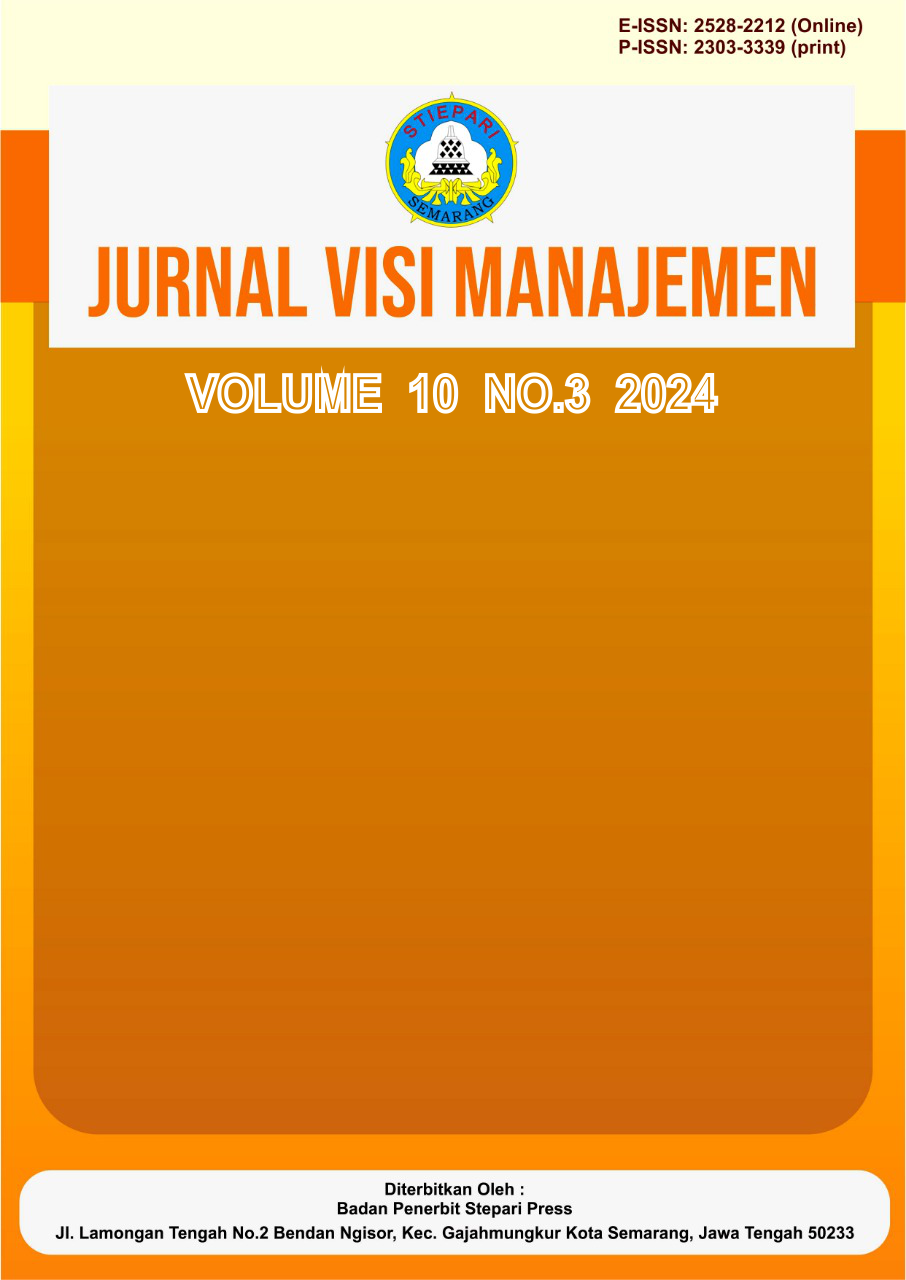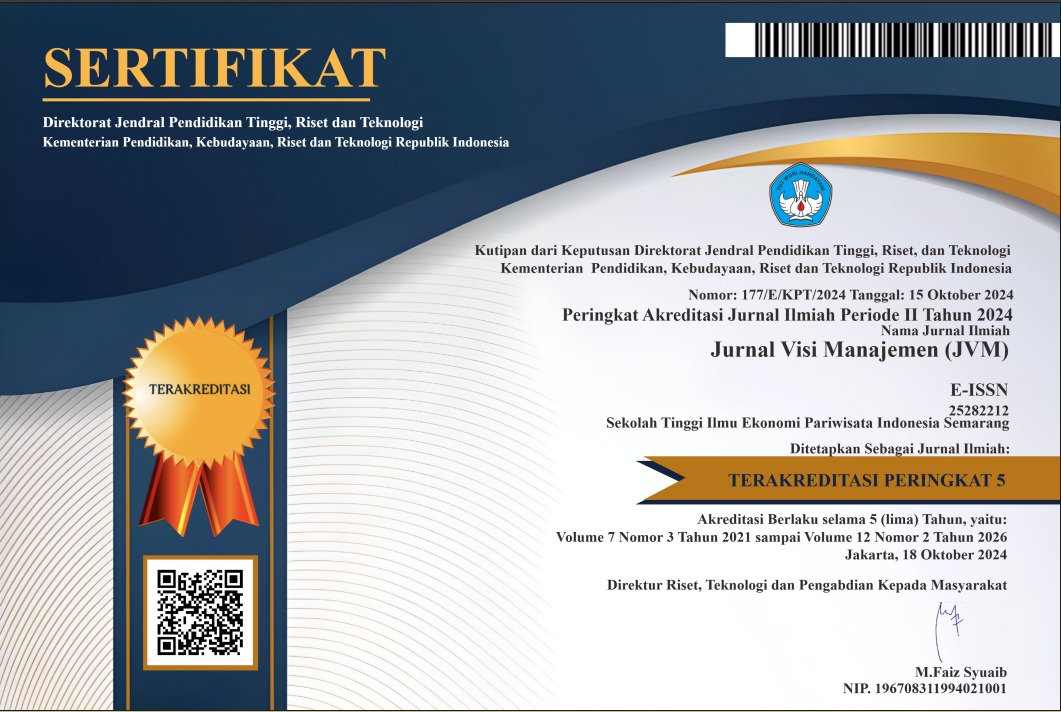Pengungkapan Risiko Keamanan Siber: Dampaknya Terhadap Hubungan Pelanggan-Pemasok Dalam Rantai Pasok Perusahaan
DOI:
https://doi.org/10.56910/jvm.v10i3.586Keywords:
Customer-Supplier Relationships, Cybersecurity Risk Disclosure, Cybersecurity, Information Transparency, Supply ChainsAbstract
This study explores the impact of cybersecurity risk disclosure on customer-supplier relationships in corporate supply chains through a qualitative literature review approach. The findings reveal that transparency in cybersecurity risk disclosure enhances trust, relationship stability, and operational efficiency within supply chains. Conversely, a lack of disclosure or poor risk management can damage reputations, create uncertainty, and weaken collaboration between business partners. The study also highlights the importance of adequate regulations, risk mitigation strategies, and the adoption of new technologies in managing cybersecurity. While offering significant insights, this study has limitations, including reliance on secondary literature and variations in industry contexts. Future research is recommended to include empirical testing and the exploration of new technologies to strengthen cybersecurity risk management in supply chains.
References
AICPA. (2018). Cybersecurity risk management reporting fact sheet. Retrieved from https://www.aicpa-cima.com/resources/download/why-use-the-aicpas-cybersecurity-risk-management-reporting-framework
Amir, E., Shai, L., & Tsafrir, L. (2018). Do firms underreport information on cyberattacks? Review of Accounting Studies, 23(3), 1177–1206.
Ashraf, M. (2022). The role of peer events in corporate governance: Evidence from data breaches. The Accounting Review, 97(2), 1–24.
Bauer, A. M., Henderson, D., & Lynch, D. P. (2018). Supplier internal control quality and the duration of customer-supplier relationships. The Accounting Review, 93(3), 59–82.
Berkman, H., Jona, J., Lee, G., & Soderstrom, N. (2018). Cybersecurity awareness and market valuations. Journal of Accounting and Public Policy, 37(6), 508–526.
Booth, A., Sutton, A., & Papaioannou, D. (2016). Systematic approaches to a successful literature review. SAGE Publications.
Braun, V., & Clarke, V. (2006). Using thematic analysis in psychology. Qualitative Research in Psychology, 3(2), 77–101. https://doi.org/10.1191/1478088706qp063oa
Chen, C., Kim, J.-B., Wei, M., & Zhang, H. (2019). Linguistic information quality in customers’ forward-looking disclosures and suppliers’ investment decisions. Contemporary Accounting Research, 36(3), 1751–1783.
Chen, K. (2022). Suppliers’ relationship-specific investments and customers’ management forecasts. Advances in Accounting, 59, 100626.
Chiu, T.-T., Kim, J.-B., & Wang, Z. (2019). Customers’ risk factor disclosures and suppliers’ investment efficiency. Contemporary Accounting Research, 36(2), 773–804.
Crosignani, M., Macchiavelli, M., & Silva, A. F. (2023). Pirates without borders: The propagation of cyberattacks through firms’ supply chains. Journal of Financial Economics, 147(2), 432–448.
Ekawahyu Kasih, Farah Qalbia, & Novrizal Novrizal. (2022). Empowering Talent In The Age Of Artificial Intelligence: Innovations In Human Resource Management. The International Conference on Education, Social Sciences and Technology (ICESST), 1(2), 287–295. https://doi.org/10.55606/icesst.v1i2.383
Gordon, L. A., Loeb, M. P., Lucyshyn, W., & Sohail, T. (2006). The impact of the Sarbanes-Oxley Act on the corporate disclosures of information security activities. Journal of Accounting and Public Policy, 25(5), 503–530.
Haapamäki, E., & Sihvonen, J. (2019). Cybersecurity in accounting research. Managerial Auditing Journal, 34(7), 808–834.
https://doi.org/10.1002/jcaf.22695
https://doi.org/10.1016/j.jbusres.2019.07.039
https://www.sec.gov/divisions/corpfin/guidance/cfguidance-topic2.htm
Martin, K. D., Borah, A., & Palmatier, R. W. (2017). Data privacy: Effects on customer and firm performance. Journal of Marketing, 81(1), 36–58.
Nelson, A., & Wang, S. (2024). The importance of cybersecurity disclosures in customer relationships. The Journal of Corporate Accounting & Finance.
Popay, J., Roberts, H., Sowden, A., Petticrew, M., Arai, L., Rodgers, M., ... & Duffy, S. (2006). Guidance on the conduct of narrative synthesis in systematic reviews. A product from the ESRC Methods Programme.
Richardson, V. J., Smith, R. E., & Weidenmier Watson, M. (2019). Cybersecurity risk management: Oversight and disclosure. The CPA Journal, 89(4), 18–25.
Ruslaini Ruslaini, Dadang Irawan, Farah Qalbia, & Seger Santoso. (2022). Optimizing Human Capital in the Era of AI Advancements : Strategi for the Future Workforce. The International Conference on Education, Social Sciences and Technology (ICESST), 1(2), 278–286. https://doi.org/10.55606/icesst.v1i2.382
Securities and Exchange Commission (SEC). (2011). CF disclosure guidance: Topic No. 2 cybersecurity. Retrieved from
Snyder, H. (2019). Literature review as a research methodology: An overview and guidelines. Journal of Business Research, 104, 333–339.
Tranfield, D., Denyer, D., & Smart, P. (2003). Towards a methodology for developing evidence‐informed management knowledge by means of systematic review. British Journal of Management, 14(3), 207–222. https://doi.org/10.1111/1467-8551.00375







